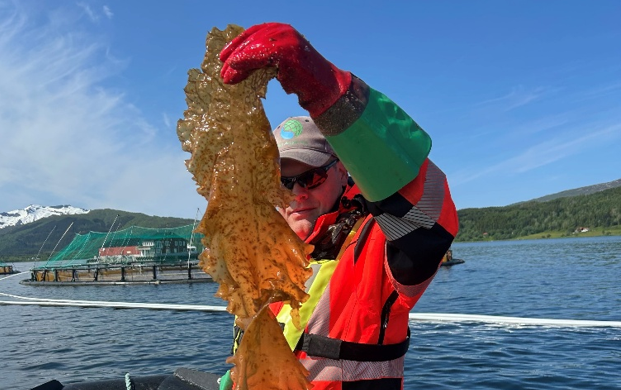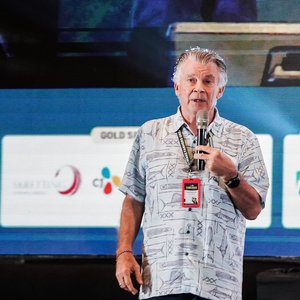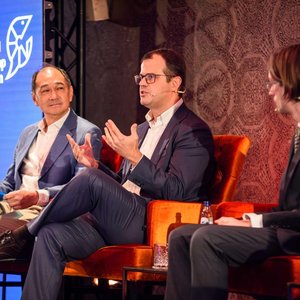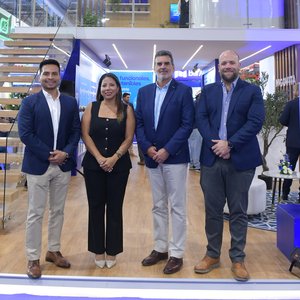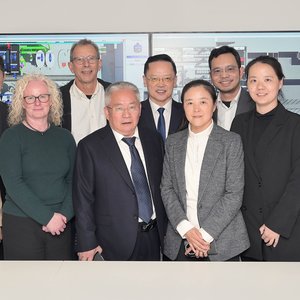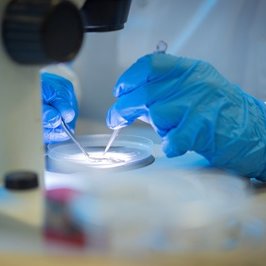Origins of the concept
Folla Alger is developing integrated kelp farming and salmon farming (IMTA; Integrated Multi-Trophic Aquaculture). The founders of Folla Alger all come from the salmon farming industry. Having witnessed the challenges of a single-species focus, they began exploring how the IMTA (Figure 1) could diversify the production.
“Today, Norway has around 1,800 salmon farms, almost all of them farming only Atlantic salmon. We believe it’s beneficial to develop a concept that allows for farming two species in the same location. Seaweed absorbs nutrients from salmon production, thereby reducing the environmental footprint and accelerating its growth. At the same time, you can use the same staff, boats, and equipment for both,” Torben Marstrand, general manager of Folla Alger, said Aquafeed.com in a recent interview.
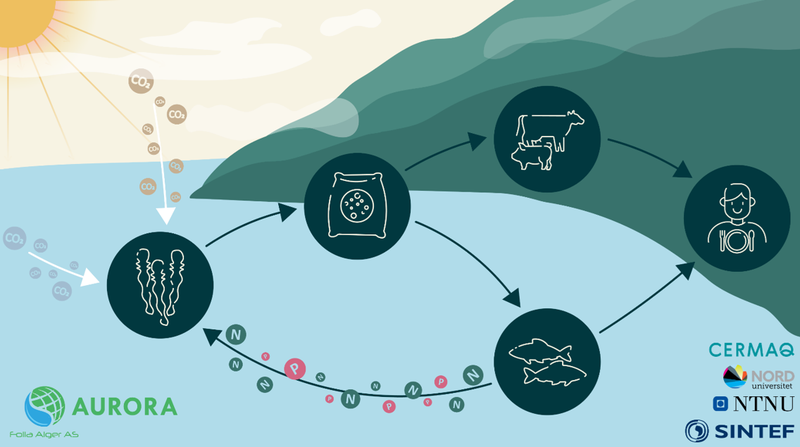
Figure 1. Principle idea of IMTA (Integrated Multi-Trophic Aquaculture). Credits: Folla alger.
A unique IMTA production system
What makes Folla Alger different is how closely the two species are farmed together. Their system places kelp just 20 meters from salmon cages, ensuring maximum nutrient uptake. Unlike conventional setups, which often require separate mooring systems and distances of 500-1,000 meters, Folla Alger’s design allows for flexible configurations that can be adjusted between production cycles.
The team has also developed adjustable seaweed frames that can be lowered to five meters deep, protecting crops from freshwater layers that appear during seasonal runoff. In this sense, Marstrand added: “Flexibility is crucial. Being able to move and adjust the seaweed gives us resilience and efficiency that traditional systems don’t have.”
Early results for salmon and seaweed
The company is now in its second salmon production cycle. While final conclusions are still premature, the results so far are promising, showing good biological performance on the farm, in addition to the positive environmental impacts resulting from seaweed nutrient uptake. Water quality, oxygen levels, currents, and sea lice are all being closely monitored, with outcomes that match or even exceed those of conventional salmon farms.
On the algae side, Folla Alger is targeting high-volume markets such as animal feed, while also developing new feed additives for salmon feeds. Although sugar kelp, their main species, is not widely used in aquafeed today, the team has identified bioactive compounds that may improve fish health. The major challenge is still mortality. Likewise, the company's goal is to test whether bioactive seaweed compounds can reduce losses and enhance fish resilience.
Partnerships and scalability
Collaboration has been essential to Folla Alger’s progress. The company works with partners on both small- and large-scale trials and is optimistic about scaling the model across Norway’s salmon farms. “If more farmers start growing seaweed alongside salmon, it could give a real boost to the emerging seaweed industry,” Marstrand said.
In parallel, the company is advancing its research on commercial feed additives. Today, approximately 90% of salmon feed ingredients are imported, with many coming from land-based production. “If we can replace some of these with locally produced seaweed ingredients, using only water and sunlight, the benefits are significant, both for sustainability and self-sufficiency,” added Marstrand.
Looking ahead
For now, the focus remains on building a solid foundation rather than rapid expansion. “The key to developing a seaweed industry is creating commercial products that can target large-volume markets,” mentioned the general manager.
Marstrand concluded: “We are still in the development phase. If we succeed with the basics, we can then discuss growth and scaling. With our innovative IMTA system, Folla Alger is positioning itself at the crossroads of two industries. Our model could help salmon farming reduce its footprint while unlocking new opportunities for seaweed in global markets.”


